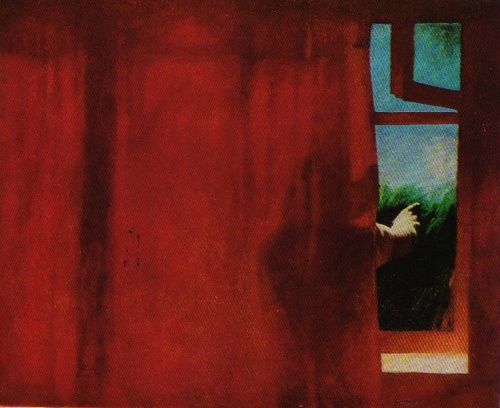born in Mukachevo, Zakarpattya region.
graduated from Taras Shevchenko State School of Fine Arts, Kyiv
graduated from National Academy of Fine Arts and Architecture, Kyiv, studio of Tetyana Yablonska
became member of Artists Union of Ukraine
became head of youth section of Artists Union of Ukraine
[1988–1989, 1991] organizer and curator of Sednev plein airs and resulting exhibitions
[1992–1995] co—founder and member of “Zhyvopisny Zapovednik” artistic group
awarded with "Artist of the Year" title in Ukraine and a scholarship of Munich municipality
became a member of the National Academy of Arts
Lives and works in Kyiv.
- 1980Figurative paintingoil on canvas
Szilvashi’s early painting was close to hyperrealist tradition, which then developed as a new visual language in Soviet art. However, from the very beginning of his practice the artist was opposed to the realist approach in painting. Working on the idea of time and its representation in painting, Szilvashi thus developed a principle of “chronorealism” which enthralled seemingly realistic genre scenes with wide colour plains standing for metaphysical time and specific painterly experience. According to the artist it was necessary for him as a painter “to live through time in a psychological manner, and then to live through it in an existential manner, once the work had been completed.” So the process of painting itself was captured in the canvas. It is already then that colour became an essential narrative element in Szilvashi’s painting, as well as point of conceptual reflection for the artist. As Marta Kuzma argues, “Szilvashi views the activity of painting as first and foremost a process: an encounter on the canvas, with or without preparation, with colour and time coordinates resulting in forms or areas suggesting space, and through colour, conveying a configuration announcing spiritual condition. This metaphysical condition is emphasized by colour, which is never clear and final in the work.”
- 2000Malarstvoinstallation, Centre for Contemporary Art, Kyiv, curated by Jerzy Onuch
Malarstvo (“painting” from Ukrainian and Polish) was a project conceived by CCA’s second director and curator Jerzy Onuch who had always been interested in the idea of painting. Onuch thus invited painters Tiberiy Szilvashi from Ukraine and Leon Tarasewicz from Poland to challenge the idea of painting in the space of CCA galleries. Szilvashi used the complete space as the ‘ground’ of a painterly intervention, turning it into a volumetric painting. The room was painted blue, a pool with deep-blue water vitalizing the floor. Only a few colored spots highlighted the composition.




